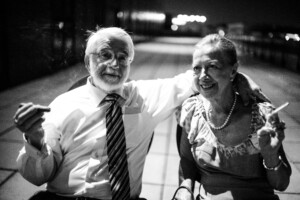Gene Patents Ruled Invalid
In a pretty remarkable move, the United States District Court for the Southern District of New York yesterday held that genes can not be patented merely because they have been isolated and purified out of their surrounding DNA. Attorneys from the American Civil Liberties Union and the Cordozo Law School’s Public Patent Foundation, working on behalf of the Association for Molecular Pathology, challenged the validity of patents held by Myriad Genetics and the University of Utah on the BRCA1 and BRCA2 genes (particular mutations in which are associated with breast cancer). District Court Judge Robert Sweet held that isolated “wild-type” DNA sequences are “naturally-occurring” things, and are therefore not patentable subject matter under the U.S. Patent Act [read the full decision in PDF format here].
The decision also invalidated Myriad Genetics’ patents on all methods of comparing the sequences of “normal” and “mutated” BRCA1 and 2 genes because they are “abstract mental processes,” which are also unpatentable subject matter. Although the case addressed only the BRCA1 and 2 genes, the decision now calls into question the validity of some 2,000 other gene patents that have been granted by the Patent and Trademark Office since the National Institutes of Health applied for the very first gene patent back in 1991.
Natural phenomena have always been unpatentable under the U.S. Patent Act, so the existence of patents on wild-type genes has long posed a bit of a paradox. However, as long ago as 1911, a federal court permitted the patenting of adrenaline, on the grounds that, once purified from the human body, the chemical existed in a substantially different form from that which was not extracted and purified. Similarly, patents on isolated genes have been rationalized on the grounds that they do not appear in nature in a purified and isolated form. Importantly, the scope of the patents on adrenaline or the BRCA1 gene extended only to those that were isolated from the human body. That’s why, for example, my mom and sisters haven’t been infringing the BRCA1 patents merely by having those genes in their DNA.
This is also why it is not perfectly clear that this District Court decision will stand up on appeal. Judge Sweet and the plaintiffs may be right that the isolation and purification doctrine is merely “a ‘lawyer’s trick’ that circumvents the prohibitions on the direct patenting of the DNA in our bodies but which, in practice, reaches the same result.” But, it’s a lawyer’s trick with a very long pedigree, and which has repeatedly been upheld in analogous situations over the past hundred years.
Nevertheless, I’ve long felt uneasy about the patenting of wild-type genes. This is quite different from, for example, intentionally changing the genetic structure of an organism to one that doesn’t exist in nature, which by all reasonable thinking amounts to a genuine invention. Judge Sweet’s opinion will have no effect on, for example, the ability to patent a new plant variety developed by conventional breeding techniques or a microbe genetically-engineered with a novel gene that makes it helpful in cleaning up oil spills, both of which have been upheld by the U.S. Supreme Court. These are, in fact, “new and useful process[es], machine[s], manufacture[s], or composition[s] of matter,” subject to patenting under the Patent Act. An isolated gene (or an isolated chemical for that matter) that already exists in nature, and which has not been modified by human hands, just isn’t.
Spending the time and resources to identify, map, sequence, and characterize a gene is a very useful activity, and one that the beneficiaries of which ought to be willing to pay for. If Judge Sweet’s decision does stand, and all gene patents become invalid, then I would expect to see an awful lot less of this very useful activity. That’s appears to be something that those cheering loudest for this decision seem not to have acknowledged. Still, I suspect that permitting the patenting of a product of nature is not the way to go about optimizing the level of such activity.
